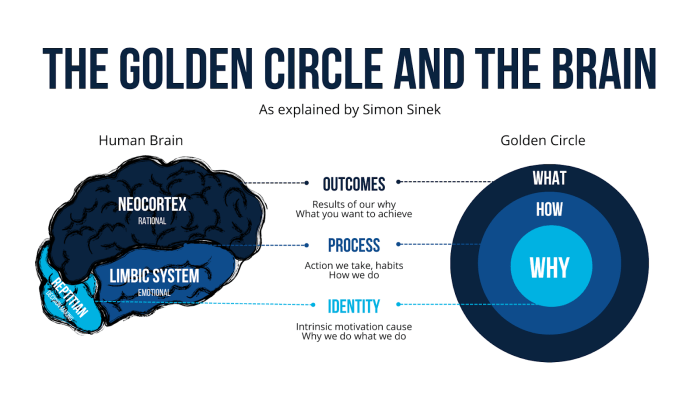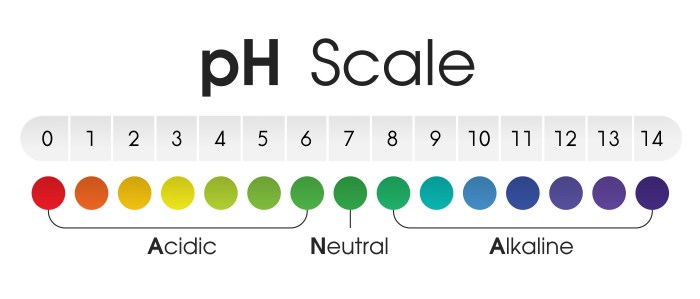Blood meal uses benefits are numerous for gardeners seeking a natural, sustainable approach to enriching their soil and boosting plant growth. This organic fertilizer, derived from animal blood, offers a wealth of nitrogen, phosphorus, and potassium, crucial nutrients for healthy plant development. Understanding its diverse applications, from enhancing soil structure to bolstering plant health, is key to maximizing your garden’s potential.
This comprehensive guide explores the various uses of blood meal, examining its composition, agricultural applications, benefits for different plants, environmental impact, and crucial safety considerations. From understanding its role in improving soil health to its effectiveness in promoting disease resistance, we’ll cover everything you need to know to harness the power of blood meal in your garden.
Introduction to Blood Meal: Blood Meal Uses Benefits
Blood meal is a natural, organic fertilizer derived from dried and processed animal blood. It’s a concentrated source of nitrogen, a crucial nutrient for plant growth. Understanding its composition and application can significantly enhance your gardening or agricultural practices.The primary source material for blood meal is animal blood, typically collected as a byproduct from slaughterhouses and processing plants.
This byproduct is then processed, dried, and ground into a fine powder. The process ensures the safety and stability of the fertilizer, while retaining its key nutrients.The chemical composition of blood meal is rich in nitrogen (N), along with smaller amounts of phosphorus (P) and potassium (K). These nutrients are essential for various plant functions, including chlorophyll production, root development, and overall growth.
The precise percentages of N, P, and K can vary depending on the specific processing methods and the source animal. A typical blood meal will have a high nitrogen content, supporting rapid leaf growth.Blood meal typically appears as a dark brown to reddish-brown powder. Its texture is generally fine and powdery, making it easy to disperse and incorporate into the soil.
The exact shade and texture can slightly vary based on the processing procedures and the specific source of animal blood.
Blood meal, a fantastic natural fertilizer, is packed with nitrogen and other nutrients. It’s great for boosting plant growth, and you can even find it used in some surprising ways. For example, if you’re looking for a gorgeous flooring option that’s both durable and stylish, consider luxury vinyl plank flooring that looks like wood – it’s a fantastic alternative to traditional hardwood.
The amazing thing about blood meal is how versatile it is for so many different gardening needs.
Comparison to Other Organic Fertilizers
| Feature | Blood Meal | Other Organic Fertilizer (e.g., Compost, Manure) |
|---|---|---|
| Source Material | Animal Blood | Plant Material, Animal Waste |
| Key Nutrients | High Nitrogen (N), moderate Phosphorus (P), and Potassium (K) | Varies widely depending on the source material, often lower levels of NPK than blood meal. |
| Appearance | Dark brown to reddish-brown powder | Can range from dark brown and crumbly to various shades and textures. |
The table above provides a concise overview of blood meal compared to other organic fertilizers. The differences in source material directly influence the nutrient profiles and physical characteristics of each fertilizer type. This understanding is crucial for selecting the most appropriate fertilizer for specific plant needs. Different plants will benefit from varying nutrient levels, which can be tailored with specific organic fertilizers.
Agricultural Applications

Blood meal, a byproduct of the meat processing industry, offers a valuable and sustainable source of nitrogen for enriching agricultural soils. Its organic nature makes it a preferred choice for gardeners and farmers seeking natural ways to enhance plant growth and soil health. This nitrogen-rich amendment, derived from animal blood, plays a crucial role in promoting vigorous plant development and a balanced soil environment.
Primary Uses in Agriculture
Blood meal acts as a potent nitrogen fertilizer, stimulating leaf growth and overall plant vigor. Its readily available nitrogen is quickly absorbed by plants, leading to increased chlorophyll production, crucial for photosynthesis. Beyond its role as a fertilizer, blood meal improves soil structure, providing a beneficial environment for healthy root development and overall plant health.
Contribution to Plant Growth and Health
Blood meal is a rich source of readily available nitrogen, a vital nutrient for plant growth. This nitrogen is quickly assimilated by plants, promoting vigorous leaf growth and overall plant health. This, in turn, contributes to increased photosynthesis, which supports the plant’s energy needs for growth and development. The nitrogen also fuels the production of chlorophyll, giving plants their characteristic green color.
Role in Soil Improvement
Blood meal’s contribution to soil improvement is multifaceted. It enhances soil structure by improving its aeration and water retention capacity. This leads to better root development and overall plant health, as roots have improved access to water and air. Furthermore, blood meal can help balance the pH of acidic soils, making them more suitable for plant growth.
It also adds organic matter, which improves the soil’s overall structure and fertility.
Incorporating Blood Meal into Gardening Methods
Blood meal can be incorporated into various gardening methods. For example, it can be used as a top dressing for existing plants or mixed into the soil during planting. Composting blood meal with other organic materials can further enhance its benefits and improve soil structure. Careful attention should be paid to application rates, as excessive amounts can lead to nitrogen burn in plants.
Optimal Application Rates for Different Soil Types
The optimal application rate of blood meal varies depending on the soil type. Different soil types have varying abilities to retain nutrients. This table provides a guideline for application rates based on soil type.
| Soil Type | Application Rate (per sq ft) | Frequency |
|---|---|---|
| Clay | 1-2 tbsp | Every 2-3 months |
| Sandy | 2-4 tbsp | Every 4-6 weeks |
| Loam | 1.5-3 tbsp | Every 6-8 weeks |
Application rates are approximate and may need adjustment based on specific soil conditions and plant needs. Regular soil testing can provide a more precise understanding of nutrient levels and guide optimal application strategies.
Blood meal is a fantastic natural fertilizer with numerous benefits for your garden. It’s packed with nitrogen, which helps plants thrive. Learning how to avoid grouting mistakes in your home’s tile work, like grouting mistakes and how you can avoid them , is equally important. Proper grouting is just as crucial as a healthy soil, and using blood meal will ensure a beautiful garden full of strong, vibrant plants.
It’s a win-win for your landscaping!
Benefits for Plants
Blood meal, a natural fertilizer derived from dried blood, offers a wealth of benefits for various plant types. Its rich nitrogen content provides a readily available source of nourishment, promoting robust growth and vibrant health. This natural approach contrasts with synthetic fertilizers, often relying on harmful chemicals and potentially disrupting the delicate balance of the soil ecosystem.Blood meal’s impact on plants extends beyond just supplying essential nutrients.
Blood meal is a fantastic natural fertilizer packed with nitrogen, perfect for boosting plant growth. But, what if you’ve got a cricket infestation? Dealing with unwanted critters like crickets can be a real headache, and knowing how to get rid of them effectively is key. Fortunately, there are many great resources available, like this one on how to get rid of crickets inside your house.
Once you’ve got your cricket problem under control, you can confidently use blood meal for your garden, reaping the benefits of this fantastic natural fertilizer.
Its organic composition helps to improve soil structure, enhancing water retention and aeration, which contributes to a healthier root system and overall plant vigor. This positive impact on the soil ecosystem further reinforces the benefits of using blood meal compared to synthetic alternatives.
Effects on Foliage, Flowering, and Fruiting
Blood meal’s high nitrogen content directly impacts the growth and development of plant foliage. Increased nitrogen availability leads to a more vibrant green color and denser leaf structure. This enhanced foliage serves as a foundation for increased photosynthetic activity, contributing to more robust flowering and fruiting. For instance, tomatoes, known for their heavy fruiting, will show a marked improvement in yield with blood meal application.
The rich nitrogen helps in developing a larger and more productive canopy, facilitating the production of more flowers and fruits. Similarly, roses will benefit from stronger stems and more abundant blooms, showcasing the beauty and vitality enhanced by blood meal.
Effects on Disease Resistance
Blood meal’s role in boosting plant health extends to disease resistance. The increased nutrient availability and improved soil conditions created by blood meal enhance the overall vigor of the plants, making them more resilient to diseases and pests. This is often observed as a result of improved root systems and a stronger, more resilient plant structure. A healthier plant is less susceptible to various diseases.
Comparison with Synthetic Fertilizers
While synthetic fertilizers offer a rapid and potent nitrogen boost, they often come with environmental concerns. They can disrupt the delicate balance of soil microorganisms and potentially leach into water sources, causing pollution. Blood meal, on the other hand, is a natural, organic alternative that promotes a healthy soil environment. Its gradual release of nutrients provides a sustained benefit to the plant over time.
For example, a tomato plant receiving blood meal consistently over the growing season will show improved growth and yield compared to a plant receiving a single dose of synthetic fertilizer.
Benefits for Different Plant Types
The table below Artikels the benefits of using blood meal for different plant types, highlighting the expected improvements.
| Plant Type | Benefits | Expected Improvements |
|---|---|---|
| Tomatoes | Nitrogen boost | Increased yield, vibrant foliage |
| Roses | Nutrient replenishment | Enhanced blooms, stronger stems |
| Vegetables | Improved growth | Larger produce, stronger roots |
Environmental Impact

Blood meal, a natural fertilizer derived from animal blood, offers a compelling alternative to synthetic fertilizers, demonstrating a remarkably positive impact on the environment. Its organic nature and slow-release properties contribute to a more sustainable agricultural system, reducing reliance on potentially harmful chemical inputs. This section delves into the environmental advantages of blood meal, comparing its impact to conventional fertilizers and exploring its role in soil health and carbon sequestration.Blood meal’s environmental footprint is significantly smaller than that of synthetic fertilizers.
This difference stems from the material’s natural origin and the production processes involved. Conventional fertilizers often rely on fossil fuels for manufacturing, contributing to greenhouse gas emissions and potentially impacting air and water quality. In contrast, blood meal production is typically a byproduct of meat processing, minimizing the environmental burden associated with its creation.
Carbon Sequestration and Soil Health
Blood meal plays a crucial role in enhancing soil health, which, in turn, supports carbon sequestration. The nitrogen content in blood meal provides essential nutrients for plant growth, stimulating microbial activity in the soil. This increased microbial activity improves soil structure, water retention, and nutrient cycling, leading to a more fertile and resilient ecosystem. Healthy soil acts as a natural carbon sink, absorbing atmospheric carbon dioxide and storing it within the soil’s organic matter.
This process mitigates the effects of climate change by reducing the amount of carbon dioxide in the atmosphere. Studies have shown that incorporating blood meal into agricultural practices can lead to significant improvements in soil carbon content over time.
Comparison to Synthetic Fertilizers, Blood meal uses benefits
The environmental impact of blood meal contrasts sharply with conventional synthetic fertilizers. While synthetic fertilizers provide rapid nutrient delivery, they often come with significant environmental costs. These fertilizers can leach into water bodies, contaminating groundwater and surface water sources. Excess nitrogen from synthetic fertilizers can contribute to harmful algal blooms, depleting oxygen in aquatic ecosystems and harming aquatic life.
Furthermore, the production of synthetic fertilizers often involves energy-intensive processes, releasing greenhouse gases into the atmosphere. In contrast, blood meal’s natural composition and production methods contribute to a more sustainable agricultural practice, with a significantly reduced environmental footprint.
Promoting Sustainable Agriculture Practices
Blood meal’s contribution to sustainable agriculture extends beyond its environmental benefits. Its natural composition encourages a closed-loop system, minimizing the need for external inputs and reducing reliance on synthetic materials. The improved soil health resulting from blood meal application also enhances crop resilience, reducing the need for pesticides and other chemical interventions. This reduced reliance on harmful chemicals directly benefits both the environment and the long-term sustainability of agricultural practices.
Environmental Benefits Comparison
| Feature | Blood Meal | Conventional Fertilizer |
|---|---|---|
| Environmental Impact | Minimal, derived from natural sources | Potential for pollution (water contamination, greenhouse gas emissions) |
| Soil Health | Improves soil structure and fertility, supports microbial activity | Potentially degrades soil structure, can lead to nutrient imbalances |
| Sustainability | Promotes closed-loop systems, reduces reliance on synthetic materials | May not be sustainable due to fossil fuel dependence and potential environmental damage |
Safety and Handling
Blood meal, while a valuable fertilizer, needs careful handling to avoid potential risks. Proper storage, application, and precautions are crucial to ensure safety for both people and the environment. Understanding the potential hazards and following safe practices minimizes the chances of accidents and maximizes the benefits of using this natural soil amendment.Handling blood meal safely involves more than just common sense; it requires awareness of the specific characteristics of this organic fertilizer.
This includes understanding potential hazards from inhalation, ingestion, or skin contact. The following sections detail best practices for safe handling and storage, dilution, and application, as well as precautions around pets and children.
Safe Handling and Storage
Blood meal is a dry, granular material. Proper storage is key to maintaining its quality and preventing potential hazards. Store it in a cool, dry, and well-ventilated area, away from direct sunlight and moisture. Using airtight containers prevents pests from accessing the product and maintains the product’s quality. Regular inspections of storage areas are vital to ensure the product remains in good condition and that there are no signs of contamination or pest infestations.
Potential Risks of Improper Use
Improper handling or application of blood meal can lead to several potential risks. Inhalation of dust can cause respiratory irritation, especially in individuals with pre-existing respiratory conditions. Ingestion of blood meal can cause mild gastrointestinal upset. Direct skin contact can lead to mild irritation or allergic reactions in sensitive individuals. In extreme cases, exposure to excessive amounts of blood meal can lead to more serious health problems.
Dilution and Application Methods
The appropriate dilution and application methods for blood meal depend on the intended use. For instance, when used as a soil amendment, blood meal is typically applied directly to the soil at a rate of 1-2 pounds per 100 square feet. For foliar feeding, a diluted solution (1-2 tablespoons per gallon of water) can be sprayed on the leaves of plants.
Always consult product labels or reputable agricultural resources for specific dilution and application rates. Always use caution and wear appropriate protective gear during application.
Precautions Around Pets and Children
Blood meal, while generally safe, requires precautions around pets and children. Keep blood meal out of reach of children and pets to prevent accidental ingestion. Clean up any spills promptly to prevent accidental exposure. Always store blood meal in a secure location.
Safety Precautions and First Aid Measures
| Situation | Precautions | First Aid |
|---|---|---|
| Ingestion | Avoid contact; Do not induce vomiting. | Seek immediate medical attention. |
| Inhalation | Avoid prolonged exposure; Use proper ventilation. | Move to fresh air. Seek medical attention if symptoms persist. |
| Skin Contact | Wear gloves; Wash affected area thoroughly with soap and water. | Wash affected area thoroughly with soap and water. Apply a soothing lotion if necessary. |
These precautions help ensure safe and effective use of blood meal. Always prioritize safety and consult relevant resources for specific instructions and recommendations.
Closing Notes
In conclusion, blood meal offers a powerful and sustainable alternative to synthetic fertilizers, providing a rich source of nutrients for a thriving garden while minimizing environmental impact. By understanding its applications, benefits, and safety precautions, you can effectively integrate this natural fertilizer into your gardening routine. From improving soil structure to enhancing plant growth, blood meal empowers you to cultivate a healthier, more vibrant garden with minimal environmental footprint.





